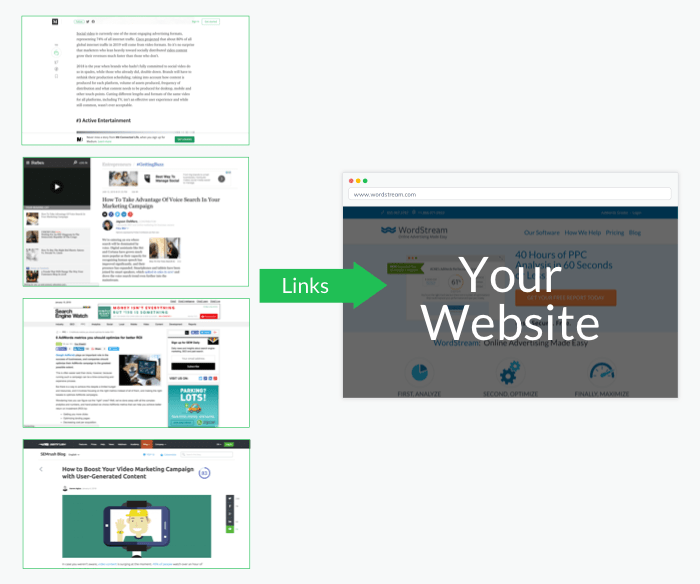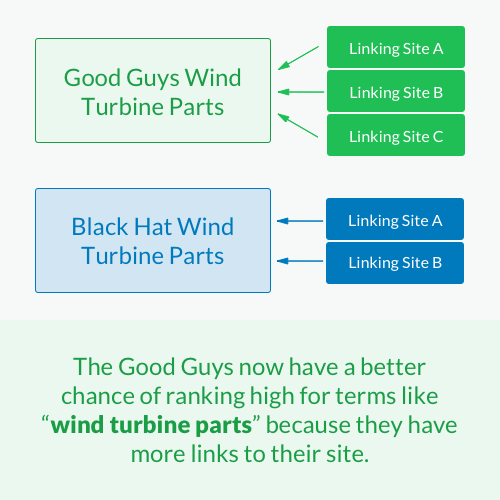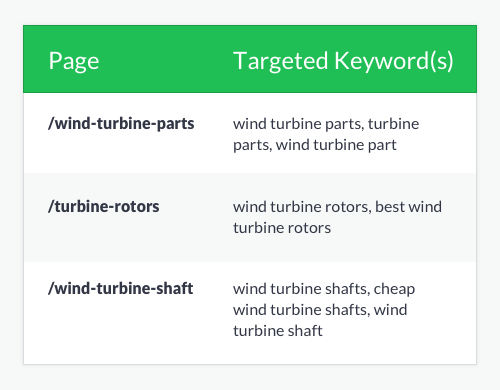Learn the Basics of Quality Link Building for SEO
What Is Link Building? A Definition
Link building, simply put, is the process of getting other websites to link back to your website. All marketers and business owners should be interested in building links to drive referral traffic and increase their site’s authority.
Why build links? Google’s algorithms are complex and always evolving, but backlinks remain an important factor in how every search engine determines which sites rank for which keywords. Building links is one of the many tactics used in search engine optimization (SEO) because links are a signal to Google that your site is a quality resource worthy of citation. Therefore, sites with more backlinks tend to earn higher rankings.

There’s a right way and a wrong way, however, to build links to your site. If you care about the long-term viability of your site and business, you should only engage in natural linkbuilding, meaning, the process of earning links rather than buying them or otherwise achieving them through manipulative tactics (sometimes known as black-hat SEO, a practice that can get your site essentially banned from the search results).
That said, natural, organic link building is a difficult, time-consuming process. Not all links are created equal: A link from an authoratative website like the Wall Street Journal will have a greater impact on your rankings on the SERP than a link from a small or newly built website, but high-quality links are harder to come by.
This guide will teach you how to build quality links that improve your organic rankings without violating Google guidelines.
Remember, link building is imperative in achieving high organic search rankings.
Why Link Building Is Important for SEO
Link building is important because it is a major factor in how Google ranks web pages. Google notes that:
“In general, webmasters can improve the rank of their sites by increasing the number of high-quality sites that link to their pages.”
Imagine that we own a site promoting wind turbine equipment that we sell. We’re competing with another wind turbine equipment manufacturer. One of the ranking factors Google will look at in determining how to rank our respective pages is link popularity.

While the above example provides a general visual understanding of why link building is important, it’s very basic. It omits key factors such as:
- The trust and authority of the linking pages.
- The SEO and content optimization of the respective sites.
- The anchor text of the incoming links.
For a more in-depth explanation of how PageRank is calculated, read through these resources:
- The original Google PageRank paper
- An in-depth discussion of the formula behind PageRank
- The Wikipedia page on the subject
The most important concept to understand is that, as Google says, you’re more likely to have your content rank higher for keywords you’re targeting if you can get external websites to link to your pages.
Simple Link Building Strategies: How To Get Other Sites to Link to You
There are a number of link building strategies used to get external websites to link to yours:
- Content Creation & Promotion – Create compelling, unique, high-quality content that people will naturally want to reference and link to, and tell people about it. You have to spread the word before you can expect anyone to find your content and link to it!
- Reviews & Mentions – Put your product, service, or site in front of influencers in your industry, such as popular bloggers or people with a large social media following.
- Links from Friends & Partners – Ask people you know and people you work with to link to your site. Remember that relevance matters; links from sites that are in the same general industry or niche as your site will have more value than links from random, unrelated sites.
It can take a while to build a lot of links, but be patient, and remember that shortcuts like buying links are against Google’s guidelines and can be devastating for your SEO. Don’t take chances.
Build Links for Free with Internal Link Building
There’s an easy, underrated way to build links to the pages you’re attempting to improve search engine rankings for. And it’s a method you have total control over: Internal link building.
In attempting to get a Web page to rank, there are a few key factors to consider:
- Anchor Text – One of the most important things search engines take into account in ranking a page is the actual text a linking page uses to talk about your content. So if someone links to our Good Guys Wind Turbine Parts site with the text “wind turbine parts”, that will help us to rank highly for that keyword phrase, whereas if they had simply used text like “Good Guys LLC” to link to our site, we wouldn’t enjoy the same ranking advantage for the phrase “wind turbine parts”.
- Quality of the Linking Page – Another factor taken into account is the quality of the page that is sending the link; search engines allow links from high-quality, trusted pages to count more in boosting rankings than questionable pages and sites.
- Page the Link is Aimed At – Many times, when people talk about your site they’ll link to the home page. This makes it difficult for individual pages to achieve high rankings (because it’s so difficult for them to generate their own link equity).
These are all elements we can’t control in attempting to get other sites to link to us. We can, however, control all of these elements in linking to our own pages from our own content. We can:
- Determine what anchor text to use.
- Decide which page to point that anchor text at.
- Ensure that the quality and content of the linking page is high (since it’s our page!).
Building external links to your site is important, but in focusing more of your efforts on the optimization of these internal links you can build quality in-bound links with rich anchor text to the proper pages, which will provide you with an unparalelled ranking boost (for free!).
Internal Link Building Tools and Tips
So how do you go about building these great internal links? Well, you can set up a system for interlinking your pages in a few easy steps:
- Keyword Research for Link Building – First, you need to utilize a keyword research tool to have numerous keywords suggested to you that are both relevant and popular.
- Assign Keywords to Content – Next, you have to group your keywords strategically, creating a search-friendly information architecture.
- Link Pages Using Targeted Anchor Text – The final step is to apply your keyword research to intelligent inter-linking; you do this by linking to content using the keywords you’ve discovered.
The execution of the third item is key. You need to be sure that you’re linking to the right pages with the right anchor text. Here are a couple quick tips for carrying that out effectively:
Use Your Site Search
This one’s pretty simple, and can be used for multiple purposes:
- Finding pages on your site to link to a new page – When you create new content, you want to make sure you can search your site for mentions of similar keyword variations you might want to link to that page.
- Finding a page that’s been created to link to – Your site may have multiple content authors. In this case, you may have a vague idea that a page about “wind turbine rotors” has been created, but you don’t know the page title or URL. In this case, you can either type the keyword into your site search to find the corresponding page, or use Google itself. To do this we’d simply type: “site:http://www.goodguyswindturbineparts.com intitle:wind turbine rotors” into Google. This would return all of the pages containing that phrase that Google has indexed.
Create an Internal SEO Link Building Wire Frame
To do this, you simply need to map the keywords you’d like to target to the most logical pages. So, let’s say we have three pages to choose from:
- goodguyswindturbineparts.com/wind-turbine-parts
- goodguyswindturbineparts.com/turbine-rotors
- goodguyswindturbineparts.com/wind-turbine-shaft
Since the turbine rotors page definitely seems to be the best fit for our “wind turbine rotors” keyword, we’ll align that keyword with that page.
We can similarly match “wind turbine parts” and “wind turbine shaft” with the corresponding pages. In a spreadsheet, this might look something like this:

As you can see, each page is associated with mutiple keywords. By making this document available to all of your content writers, they can quickly see which pages are targeting which keywords; they can also instantly check your SEO wireframe to see which keywords have been targeted (with a simple ctrl F!).
Need more help with SEO? Check out our comprehensive SEO Basics guide.
